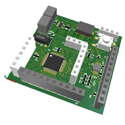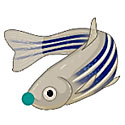A Wearable Device Towards Automatic Detection and Treatment of Opioid Overdose IEEE Trans Biomed Circuits Syst
A wearable closed-loop drug delivery system capable of detecting a hypoxia event and an automatic rapid delivery of a naloxone dose has the potential to mitigate the effects of the opioid epidemic. The closed-loop system can be complementary to the existing evidence-based harm reduction strategies, particularly in instances of unwitnessed overdose where there are no bystanders to administer Narcan.
[Read More]










